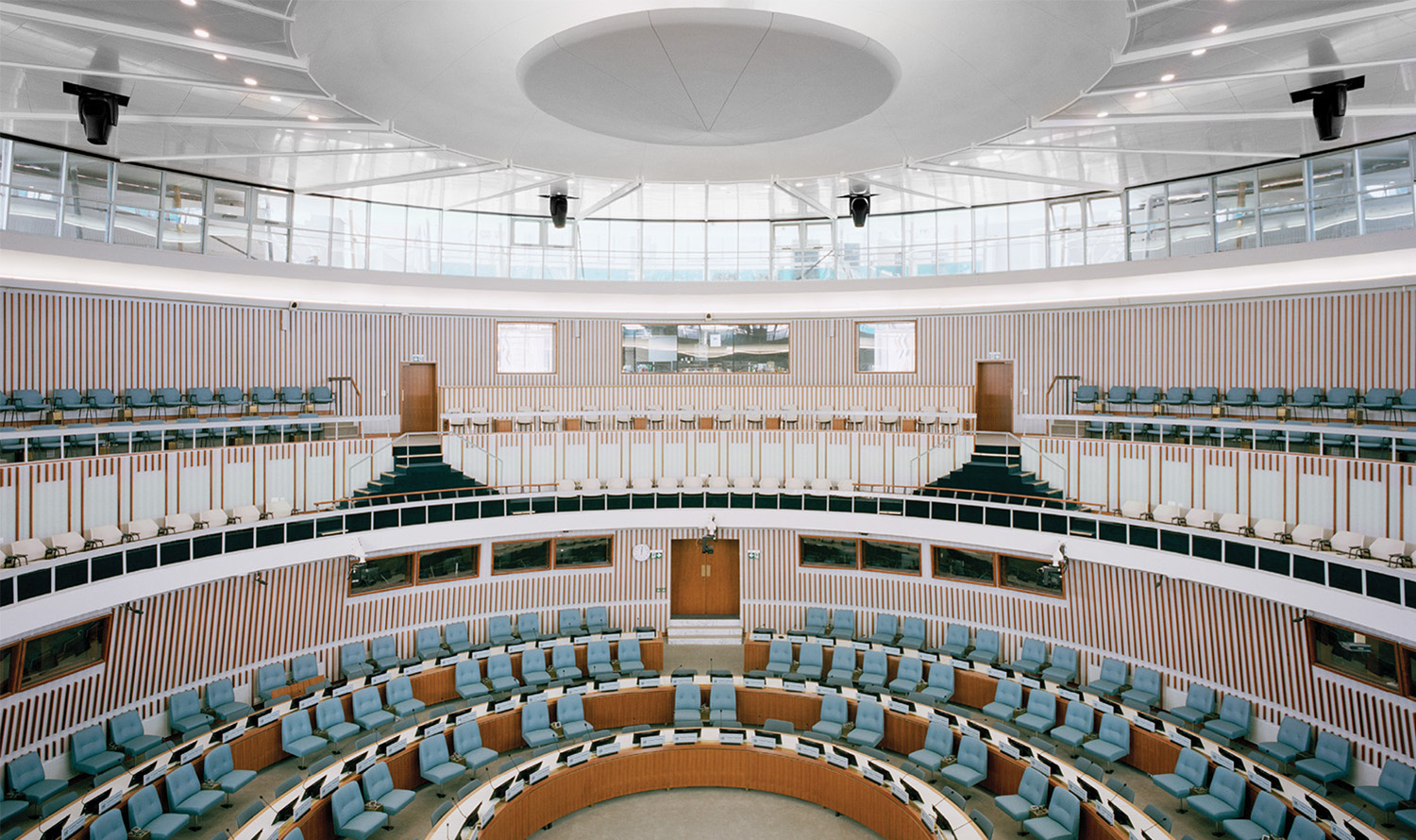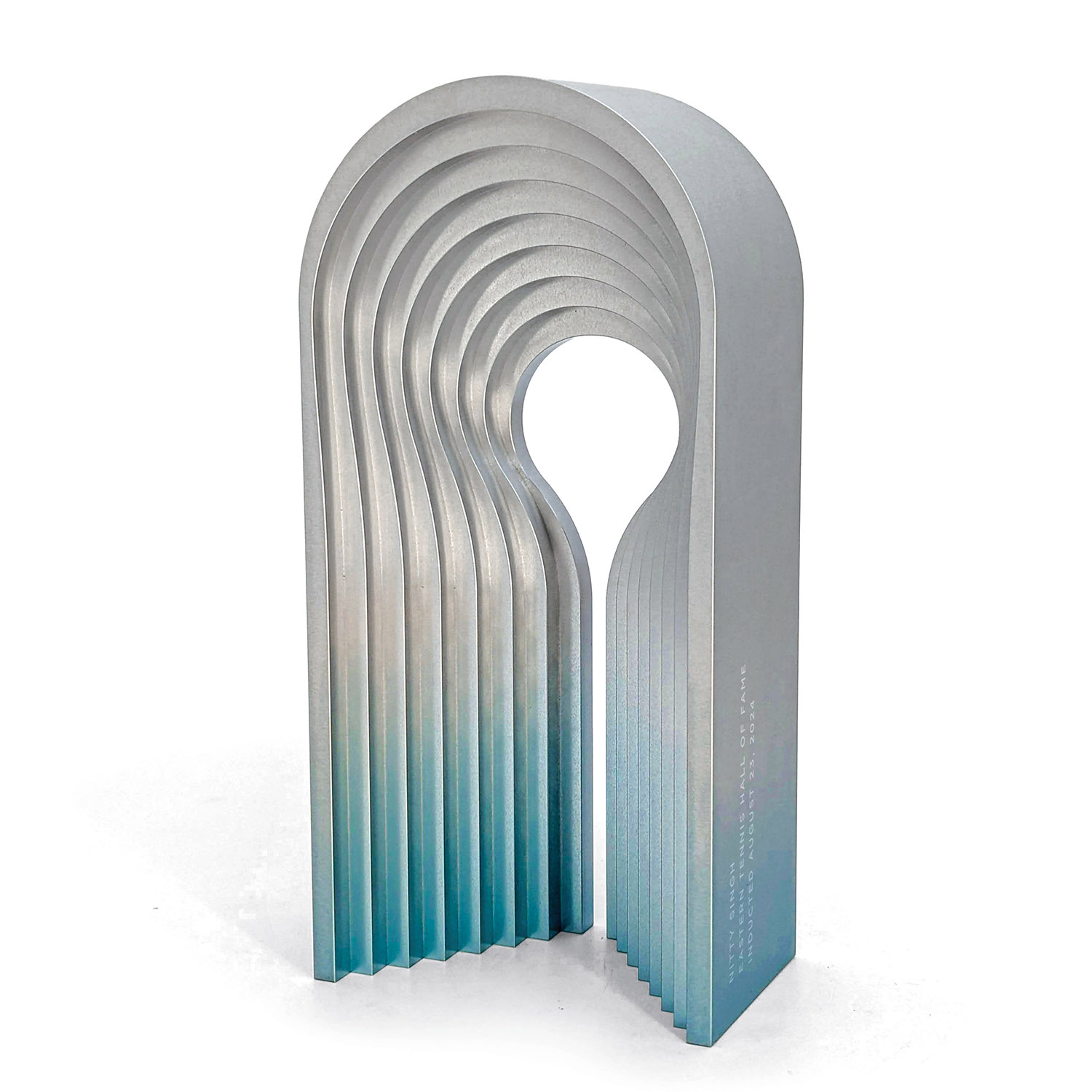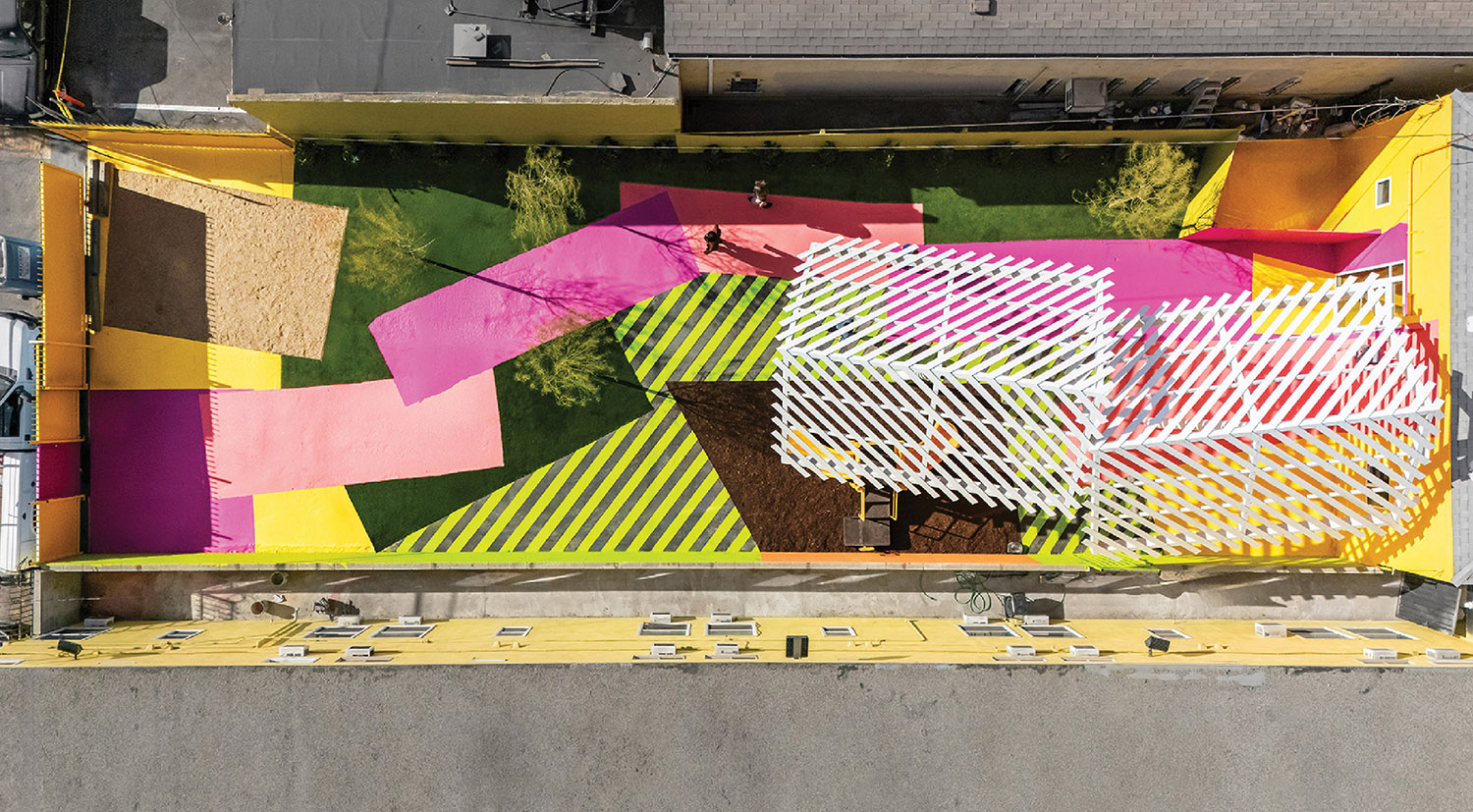Contain Yourself: Anja Thede’s Crate Studio
At headquarters outside Frankfurt, Anja Thede Architektur und Kommunikation im Raum handles day-to-day business. A small satellite studio in Berlin, on the other hand, is meant more as a think tank, a getaway in which to generate experimental ideas or invite clients over “for a coffee, to chill,” as Anja Thede puts it. Because she also lives at the studio when she’s in town, she came up with a way to insulate herself from the workday once her staffers have left for the evening. She and her black Lab retreat into a plywood box: a lounge with a sofa, two folding tables, cubbies for books, and a retractable flat-screen TV.
Multifunctional freestanding structures recur in Thede’s projects, which tend to be much larger than the 865 square feet at the Berlin studio. Her clients call on her to transform old breweries, mills, and factories—including one for ballpoint pens—into residential lofts. She punctuates them with self-contained sleeping quarters and saunas in order to bring the huge volumes down to a more human scale without spoiling what makes them so desirable in the first place. “The boxes preserve the expansiveness of a loft, because you can still look right through it,” she explains. “When you build walls, you think, OK, here’s the end. For me, that’s boring.” After purchasing the Berlin studio as raw space, she was determined not to detract from its wraparound windows and 16-foot ceiling. Anyone entering her front door can see straight back and up, to the sleeping loft, and vice versa. Off to the side stands the lounge-in-a-box. At 230 square feet, it not only keeps sight lines clear but also conceals a coat closet, drawers, and several individual pieces of furniture that would otherwise create visual clutter, at least in Thede’s eyes.
Obsessed with storage, she has an ability to balance the sense of everything being seen with the intrigue of everything that’s not. The kitchen island’s doors and counter, actually all-weather paneling specified for the facade of an earlier residential project, hide a veritable Swiss Army Knife of drawers and appliances. Charcoal-gray linoleum on the kitchen wall camouflages doors to the pantry and the bathroom. Similarly seamless, the sleeping loft’s wall covering in her favorite fabric, wool felt, renders the outlines of two closets barely visible. “It’s a reinterpretation of classic jib doors, which makes it kind of exciting, wondering what’s behind them,” she says. “Plus, it puts the emphasis on materiality.”
Like many architects who specialize in loft conversions, Thede is partial to leaving even the most seemingly banal materials and elements exposed. She constructed the lounge with plywood sheets more commonly used for packing crates. Black synthetic rubber wraps huge pipes. Waxed asphalt surfaces the floor. The ceiling as well as most of the walls are the original concrete. Both the support structure of the sleeping loft and the stairs that lead up to it are galvanized steel. Even the wool felt, used for the loft’s wall covering and curtain as well as the lounge’s sofa, is intended for industrial applications.
“I enjoy mixing the rough and unfinished with the perfect, and I don’t really go for luxury,” Thede notes. “The people who hire me have a lot of money, but they don’t like anything flashy. It’s a certain mentality.” (To get a sense of cost, consider the fact that she’s now offering versions of the lounge, marketed as Cargo Box 002, for the equivalent of about $23,000 to $26,000.) The lack of flash at her studio was also a site-specific choice. The location, in a working-class neighborhood on Berlin’s outskirts, is a condominium development that started life as a labor camp at the end of the 19th century and continued as a prison until 1990. As part of the conversion, the original cluster of redbrick buildings was joined by several glass-and-concrete buildings including a pavilion intended for a supermarket. When efforts to attract one failed, it was split into six units, and Thede, something of a history buff, bought one of them. “Being surrounded by a former jail, I felt, the studio should be elementary and plain, handled modestly,” she says. Modest, maybe. But plain? We beg to differ.
Project Team
Bau-und Möbelschreimerei Elmar Busch: Woodwork.


